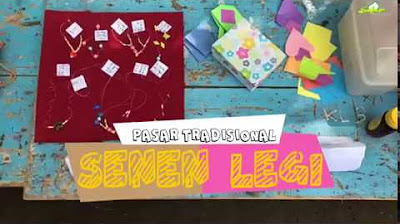The Art of Judo - Episode 2 - Japan Trailer
Summary
TLDRThe provided script features a musical introduction and conclusion, suggesting a video that may revolve around music or a performance. The use of music in the transcript implies a dynamic and engaging atmosphere, possibly with a focus on entertainment or artistic expression.
Takeaways
- 🎵 The script features the use of music to set the tone, indicating a possible upbeat or engaging atmosphere.
- 📜 The repetition of '[Music]' suggests a pattern or theme in the soundtrack, possibly highlighting transitions or sections within the video.
- 👤 The use of 'you' directly addresses the viewer, creating a personal connection or inviting interaction.
- 🎶 The placement of '[Music]' before and after 'you' might imply that the music is used to emphasize the message or call to action directed at the viewer.
- 🔁 The script's brevity and repetition hint at a potential loop or recurring segment in the video, which could be part of a larger narrative or structure.
- 🎥 The absence of detailed content suggests that the video might rely heavily on visual elements or actions to convey its message.
- 🎧 The mention of music twice could also indicate a focus on the audio experience or the importance of the soundtrack in the video's overall impact.
- 🤔 The simplicity of the script might be intentional to provoke thought or curiosity, leaving room for the viewer to fill in the gaps.
- 📈 The structure could be indicative of a marketing strategy, where the video is designed to be memorable and easily shareable due to its concise nature.
- 🌟 The inclusion of an interactive element ('you') combined with music might be aimed at creating a memorable and engaging viewer experience.
Q & A
What is the significance of the music in the video?
-The music likely sets the tone and mood of the video, creating an emotional connection or emphasizing specific themes.
How does the music affect the listener’s perception of the content?
-Music can influence the audience's emotions, enhancing their engagement and making the message more memorable.
Why is there a pause between the music and the word 'you'?
-The pause may be used to draw attention to the word 'you,' making it feel more personal and engaging for the audience.
What role does 'you' play in the script?
-The use of 'you' likely refers to the audience, making the message feel direct and personal.
Why might the script start and end with music?
-Beginning and ending with music can create a cohesive experience, framing the content and leaving a lasting impression.
What emotions might the music evoke?
-Depending on the genre and tempo, the music might evoke emotions such as excitement, calmness, or inspiration.
Is the music instrumental or vocal, and why is this relevant?
-This information is unclear from the script, but instrumental music is often used to avoid distracting from the spoken message, while vocal music can reinforce lyrical themes.
Could the music symbolize something within the video?
-Yes, the music could symbolize themes like unity, passion, or motivation, depending on the context.
How might the audience react to this combination of music and speech?
-The audience may feel more connected and attentive due to the interplay of music and direct address, making the content more engaging.
What could the script be trying to communicate by alternating between music and speech?
-The alternation between music and speech might aim to balance emotional engagement with informative content, making the message more dynamic.
Outlines

Этот раздел доступен только подписчикам платных тарифов. Пожалуйста, перейдите на платный тариф для доступа.
Перейти на платный тарифMindmap

Этот раздел доступен только подписчикам платных тарифов. Пожалуйста, перейдите на платный тариф для доступа.
Перейти на платный тарифKeywords

Этот раздел доступен только подписчикам платных тарифов. Пожалуйста, перейдите на платный тариф для доступа.
Перейти на платный тарифHighlights

Этот раздел доступен только подписчикам платных тарифов. Пожалуйста, перейдите на платный тариф для доступа.
Перейти на платный тарифTranscripts

Этот раздел доступен только подписчикам платных тарифов. Пожалуйста, перейдите на платный тариф для доступа.
Перейти на платный тарифПосмотреть больше похожих видео

Quarter 3 - Module 2: Economics as an Applied Science

Hello Around the World | Say Hello in 15 Different Languages | Explore World Song | JunyTony

Summary of The Wife of Bath's Prologue | Canterbury Tales by Geoffrey Chaucer

Black & White | National Human Rights Commission Award Winning Short Film @themalluanalyst

PASAR SENEN LEGI SALAM

How to use VLOOKUP in Excel
5.0 / 5 (0 votes)
